The phase “Gilded Age” may conjure up visions of Newport mansions, but the era was a formative time for libraries. Librarianship in Gilded Age America: An Anthology of Writings, 1868–1901 compiles articles, letters, and other documents from familiar names in library history, among them Charles Ammi Cutter, Melvil Dewey, and John Cotton Dana. Also here are Andrew Carnegie’s explanation of why library philanthropy is a good use of surplus wealth, and engineer Bernard R. Green’s description, delivered at the 1896 ALA Annual Conference, of the new Library of Congress building.
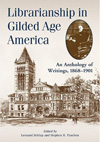 One theme that emerges is the debate over public libraries and whether they should furnish only serious, edifying books or “flash” literature. We know how that turned out, but some things never change—in an 1890 article on library work, William Frederick Poole wrote: “As a means of simply earning money, I do not recommend library work. Take up anything else.”
One theme that emerges is the debate over public libraries and whether they should furnish only serious, edifying books or “flash” literature. We know how that turned out, but some things never change—in an 1890 article on library work, William Frederick Poole wrote: “As a means of simply earning money, I do not recommend library work. Take up anything else.”
Indexed. 350p. PBK. $55 from McFarland (978-7864-4191-4)
101 Radical Reads
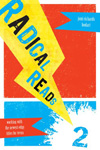 In Radical Reads, published in 2002, Joni Richards Bodart identified 101 YA novels of the type generally described as “edgy” and “gritty.” In Radical Reads 2 she lists more than 100 new ones, almost all of them award winners. What sets this bibliographic guide apart is the amount of detail provided for each title, including a sample booktalk, a list of major themes, book report ideas, review excerpts, and a useful rundown of what makes the book a risky choice, as well as what makes it good. An essential tool for librarians serving young adults.
In Radical Reads, published in 2002, Joni Richards Bodart identified 101 YA novels of the type generally described as “edgy” and “gritty.” In Radical Reads 2 she lists more than 100 new ones, almost all of them award winners. What sets this bibliographic guide apart is the amount of detail provided for each title, including a sample booktalk, a list of major themes, book report ideas, review excerpts, and a useful rundown of what makes the book a risky choice, as well as what makes it good. An essential tool for librarians serving young adults.
Indexed. 479p. PBK. $45 from Scarecrow Press (978-0-8108-6908-0)
Graphic Depictions
Reports about the firing of two public library workers in Kentucky late last year for trying to keep a graphic novel out of circulation (and the subsequent move of “mature” graphic novels to the adult section) underscore the need for librarians to understand this increasingly popular genre. The following books can help. Also check out GraphicNovelReporter.
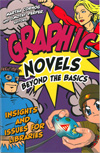 In Martha Cornog and Timothy Perper’s Graphic Novels Beyond the Basics: Insights and Issues for Librarians, 10 experts weight in on particular aspects of the literature (superheroes, manga) or on related library issues such as collection management and censorship. Many chapters contain core lists, although there is no single list of recommended titles.
In Martha Cornog and Timothy Perper’s Graphic Novels Beyond the Basics: Insights and Issues for Librarians, 10 experts weight in on particular aspects of the literature (superheroes, manga) or on related library issues such as collection management and censorship. Many chapters contain core lists, although there is no single list of recommended titles.
Indexed 281p. PBK. $45 from Libraries Unlimited (978-1-59158-478-0)
 Though he covers some of the same territory, David S. Serchay zeroes in on one segment of the audience in Graphic Novels for Adults. He explains the various types of graphic novels, but most of his book deals with practical matters such as acquisition, collection development and management, promotion and display, and dealing with various problems. The extensive list of suggested titles is a useful collection development tool.
Though he covers some of the same territory, David S. Serchay zeroes in on one segment of the audience in Graphic Novels for Adults. He explains the various types of graphic novels, but most of his book deals with practical matters such as acquisition, collection development and management, promotion and display, and dealing with various problems. The extensive list of suggested titles is a useful collection development tool.
Indexed. 319p. PBK. $65 from Neal-Schuman. (978-1-55570-662-3)
New from ALA
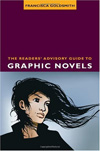 A number of books describe how to build and manage a graphic literature collection, but Francisca Goldsmith’s The Readers’ Advisory Guide to Graphic Novels goes a step further by offering tips on how to make sure the collection gets used. In addition to lists and other tools, she offers insight into the needs of both graphic novel readers and those who are new to the genre.
A number of books describe how to build and manage a graphic literature collection, but Francisca Goldsmith’s The Readers’ Advisory Guide to Graphic Novels goes a step further by offering tips on how to make sure the collection gets used. In addition to lists and other tools, she offers insight into the needs of both graphic novel readers and those who are new to the genre.
Indexed. 124p. PBK. $45 (978-0-8389-1008-5).
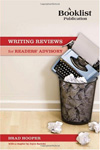 Book reviews are an important part of the readers’ advisory librarian’s tool kit. In Writing Reviews for Readers’ Advisory, Booklist Adult Books Editor Brad Hooper builds on a series of review-writing workshops he presented to explain not only how to write reviews, but how to use them. Chapters are peppered with examples, called “Hooper’s Reviews.” Joyce Saricks contributes a chapter on audiobook reviewing.
Book reviews are an important part of the readers’ advisory librarian’s tool kit. In Writing Reviews for Readers’ Advisory, Booklist Adult Books Editor Brad Hooper builds on a series of review-writing workshops he presented to explain not only how to write reviews, but how to use them. Chapters are peppered with examples, called “Hooper’s Reviews.” Joyce Saricks contributes a chapter on audiobook reviewing.
Indexed. 796p. PBK. $45 (978-0-8389-1017-7).
